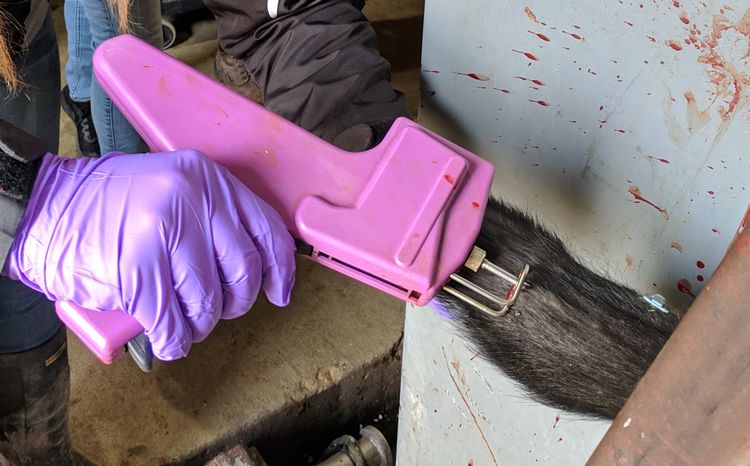After June 2023, reimplanting cattle with an ear implant that is not permitted for reimplantation on the label will no longer be appropriate.
As of August 2020, the U.S. Food and Drug Administration’s Center for Veterinary Medicine (FDA CVM) has been working to improve the consistency of new animal drug applications (NADA). The FDA CVM has recognized that some anabolic cattle ear implants may not have clear instructions on the label regarding their use for reimplanting within a production phase. The FDA CVM has issued two letters, one in May of 2021 and another in December of 2021, to inform the beef industry of their attempt to clarify reimplantation claims on cattle implant labels.
Currently, there are cattle implant labels that state the cattle implants are intended for reimplantation and there are cattle implant labels that state the cattle implants are not intended for reimplantation within a production phase. At this time however, there are other cattle implants that do not specify on the label whether reimplantation is approved. The FDA CVM has set a June 2023 deadline for cattle implant manufacturers to update the labels on their cattle implants to clarify their reimplantation approval within a production phase. Therefore, after June 2023, the FDA CVM expects cattle implant labels to indicate the approval of use for reimplantation within a particular production phase and for cattle producers to follow the instructions on the label.
What does this all mean?
First, the labels on cattle implants should clearly state if it is approved for reimplantation in a production phase by June 2023, so cattle producers can follow the label’s instructions. Implant labels should provide instructions for which production phase the implant is approved for (e.g., the “beef calf” phase, the “growing beef steers/heifers on pasture” phase, the “growing beef steers/heifers in a dry lot” phase, the “growing beef steers/heifers fed in confinement for slaughter” phase). The FDA CVM has definitions of these different production phases on their website. Below is a bulleted list of some of the production phases involving younger cattle that are typically raised for beef production.
Beef cattle production phases
- Dairy calves
- Calves fed milk until weaning (pre-ruminating).
- Beef calves
- Calves nursing their dams and less than two months of age (pre-ruminating).
- Calves nursing their dams and greater than two months of age (ruminating).
- Beef steers/heifers (includes both beef and dairy breeds)
- Growing beef steers/heifers on pasture (e.g., stockers).
- Growing beef steers/heifers in a dry lot (e.g., backgrounders).
- Growing beef steers/heifers fed in confinement for slaughter (e.g., feedlot cattle).
If the cattle implant you choose to use is not labeled for reimplant use, it may still be used again during a subsequent production phase if approved for that production phase. If the cattle implant is labeled with approval for reimplantation, that means you can readminister the cattle implant within that approved production phase.
Ambiguity may remain in the FDA CVM production phase definitions due to the housing and diet requirements as these can vary between cattle operations. If you have questions, please reach out to your Michigan State University Extension beef experts, including myself (Jerad Jaborek). We would be happy to provide you with more information about cattle implants and how they can safely and effectively improve the bottom line of your cattle operation.
Source: This article was published by Michigan State University Extension. Jerad Jaborek, August 2, 2022
Administering an implant in the back of a beef calf’s ear. Photo by Dan Buskirk, MSU.








